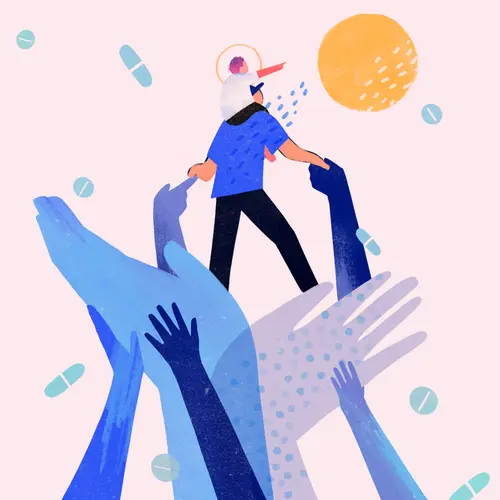Osteoporosis is a condition that weakens your bones, making fractures more likely. It’s most common later in life, especially in women after menopause.
But it’s possible for children and teens to develop juvenile osteoporosis. This most often happens in children between ages 8 and 14. It sometimes develops in younger children during growth spurts.
It’s a serious problem because it strikes when a child is still building up their bone strength. You build about 90% of your bone mass by the time you're 18 to 20. Losing bone mass during prime bone-building years can put someone at risk for complications such as fractures.
Types
There are two kinds of juvenile osteoporosis: secondary and idiopathic.
Secondary osteoporosis means that another medical condition is to blame. This is by far the most common kind of juvenile osteoporosis. Some of the diseases and causes that can lead to osteoporosis in children include:
- Juvenile arthritis
- Diabetes
- Cystic fibrosis
- Leukemia
- Celiac disease
- Osteogenesis imperfecta ("brittle bone disease")
- Homocystinuria (a genetic metabolic disorder)
- Hyperthyroidism
- Hyperparathyroidism
- Cushing's syndrome
- Malabsorption syndromes
- Anorexia nervosa or other eating disorders
- Kidney disease
Sometimes, juvenile osteoporosis is a direct result of the disease itself. For example, with rheumatoid arthritis, children may have lower-than-expected bone mass, especially near arthritic joints.
Certain drugs can also lead to juvenile osteoporosis. These can include chemotherapy for cancer, anticonvulsant medicines for seizures, or steroids for arthritis. If your child has one of these conditions, talk to their doctor about checking on their bone density.
Some teens and young women are at risk from what’s known as the female athlete triad. Strenuous training for sports or dance can make them stop having menstrual periods. That can lead to a dip in estrogen levels. And if they restrict their eating, they may not get enough calcium and other bone-building nutrients. Both conditions can lead to osteoporosis.
Idiopathic osteoporosis means that doctors don’t know what caused the disease. This type of juvenile osteoporosis is much less common. It seems to be more common in boys than in girls. It usually starts just before puberty. The child’s bone density may mostly recover during puberty, but still not quite be normal when bone mass peaks as an adult.
Symptoms
The signs and symptoms of juvenile osteoporosis include:
- Pain in the lower back, hips, knees, ankles, and feet
- Trouble with walking
- Fractures in the legs, ankles, or feet
Diagnosis
Juvenile osteoporosis is hard to define. Bone density scans are the most accurate way to detect lowered bone mass early on, but they need to be interpreted carefully to make a clear diagnosis in children.
Instead, doctors usually diagnose juvenile when there are signs that a child has a fragile skeleton. This might show up when a child's bone breaks without something like a bad fall or other trauma, and the child has a low bone mineral density score.
Treatment
Your child’s doctor will make recommendations based on the cause of your child’s juvenile osteoporosis. If another disease is to blame, they’ll treat it. If a medication is responsible, your child may be able to take a different medicine or a lower dose.
None of the osteoporosis drugs that adults can take are approved for use in children.
It’s very important to protect your child's bones from fracture. They may need to use crutches or other supports. They may also need to avoid types of exercise, such as contact sports, that could cause a fracture. Your doctor can tell you what’s OK.
All children, including those with juvenile osteoporosis, need a lifestyle that helps build healthy bones. This includes a diet rich in calcium, vitamin D, and protein, and as much safe physical activity as possible. It's best to avoid caffeine. Many experts also suggest that children with juvenile osteoporosis get bone density tests at least every other year into adulthood.

